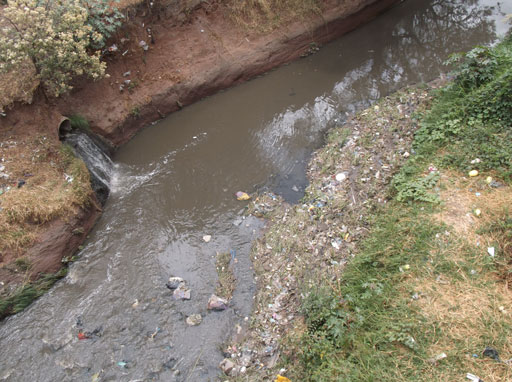How Fluid Waste Disposal Functions: A Detailed Summary of Techniques and Technologies Used

Summary of Fluid Waste Kind
The complexity of liquid waste types demands a complete understanding of their characteristics and ramifications for disposal. Liquid waste can broadly be classified right into a number of kinds, consisting of industrial, municipal, agricultural, and contaminated materials. Each group shows unique residential or commercial properties, needing specific monitoring methods to reduce environmental and health and wellness risks.
Industrial liquid waste stems from producing procedures and usually includes an array of impurities, such as hefty steels, solvents, and organic compounds. Community liquid waste, largely comprising wastewater from homes and business establishments, includes natural matter, nutrients, and pathogens (industrial wastewater treatment). Agricultural liquid waste, including runoff from farms, might have fertilizers, chemicals, and animal waste, positioning threats to water top quality and environments
Dangerous liquid waste is defined by its poisoning, reactivity, or potential to trigger damage. This classification consists of materials like acids, bases, and certain chemicals that demand stringent handling and disposal protocols. Comprehending these varied liquid waste kinds is important for establishing reliable disposal approaches and making certain conformity with environmental guidelines. Appropriate classification and characterization are essential for carrying out ideal treatment methods and lessening the negative influence on public health and wellness and the setting.
Physical Treatment Techniques

Testing is the initial action, where larger fragments and particles are removed from the fluid waste making use of displays or grates. In sedimentation storage tanks, larger bits work out at the bottom, forming a sludge layer, while the made clear fluid can be further treated.
Purification is an additional important technique that includes passing the fluid via permeable products, such as sand or membrane layers, to record smaller sized bits. This step improves the quality of the liquid, making it suitable for subsequent therapy procedures.

Chemical Treatment Techniques
Chemical therapy strategies are crucial for successfully taking care of liquid waste, especially in addressing dissolved and colloidal impurities that physical approaches may not sufficiently eliminate. These techniques utilize various chemical representatives to neutralize, precipitate, or change unsafe materials into much less harmful types.
One typical technique is coagulation and flocculation, where chemicals such as alum or ferric chloride are contributed to promote the gathering of put on hold bits. This procedure enhances sedimentation, permitting much easier removal of the resulting sludge. Furthermore, oxidation procedures, using representatives like chlorine or ozone, are employed to break down complicated organic compounds and virus, rendering the waste safer for discharge or additional therapy.
Neutralization is another crucial strategy, which adjusts the pH of acidic or alkaline waste streams to neutral degrees, protecting against potential harm to downstream systems and the environment. In addition, progressed oxidation processes (AOPs) use mixes of oxidants and ultraviolet light to degrade relentless pollutants, achieving a higher level of therapy effectiveness.
Biological Therapy Processes
Organic therapy processes play a crucial duty in the management of fluid waste by utilizing bacteria to break down natural matter and minimize impurity degrees. These processes can be extensively classified right into cardiovascular and anaerobic therapies, each employing specific microbial communities to attain effective waste deterioration.
Cardio treatment entails making use of oxygen to facilitate the breakdown of organic materials by germs. This process is commonly executed in turned on sludge systems, where oygenation storage tanks supply a conducive atmosphere for microbial growth, resulting in the oxidation of organic toxins. The resultant biomass can be divided from treated effluent through sedimentation.
In comparison, anaerobic treatment takes place in the lack of oxygen, counting on different microorganisms to damage down raw material. This technique is specifically helpful for high-strength waste, as it generates biogas, a renewable resource source, while reducing sludge production. Technologies such as anaerobic digesters are often used in local and industrial applications.
Both anaerobic and cardio organic treatments not just decrease the environmental effect of liquid waste yet additionally assist in resource recuperation, making them crucial parts of sustainable waste monitoring approaches. Their efficiency, efficiency, and adaptability support their extensive implementation across various markets.
Arising Technologies in Disposal
Ingenious approaches to liquid garbage disposal are rapidly developing, driven by advancements in innovation and a boosting emphasis on sustainability. Amongst these arising modern technologies, membrane layer bioreactors (MBRs) have gained grip for their capability to combine organic therapy with membrane purification, leading to top notch effluent that can be reused in various applications. MBRs make it possible for smaller sized footprints and extra effective operations compared to conventional systems.
One more encouraging growth is the use of anaerobic food digestion integrated with nutrient recovery modern technologies, which not only treats fluid waste but also produces biogas and recovers beneficial nutrients like nitrogen and phosphorus. This twin benefit try this website boosts source effectiveness and lowers environmental impact.
Furthermore, advanced oxidation processes (AOPs) are being adopted for the degradation of complicated organic pollutants. These techniques use effective oxidants and stimulants to break down pollutants at the molecular level, providing a highly effective service for tough waste streams.
Additionally, the integration of artificial intelligence and artificial intelligence in waste monitoring systems is optimizing functional efficiency and predictive maintenance, bring about minimized prices and boosted environmental conformity. These technologies reflect a considerable shift towards more effective and lasting liquid garbage disposal techniques.
Verdict
In final thought, effective liquid waste disposal necessitates a comprehensive understanding of various strategies and technologies. By continually advancing these techniques, it becomes possible to address the growing challenges linked with fluid waste, eventually contributing to environmental protection address and source healing.
Liquid waste disposal is a vital facet of environmental management, needing a comprehensive understanding of numerous read this article techniques and technologies tailored to different waste types. Fluid waste can extensively be categorized into a number of types, including commercial, metropolitan, farming, and harmful waste. Agricultural liquid waste, consisting of drainage from ranches, might contain plant foods, pesticides, and pet waste, posing risks to water quality and communities.
Numerous physical therapy methods play an essential role in taking care of fluid waste properly - industrial wastewater treatment.In verdict, effective liquid waste disposal demands a thorough understanding of different techniques and modern technologies